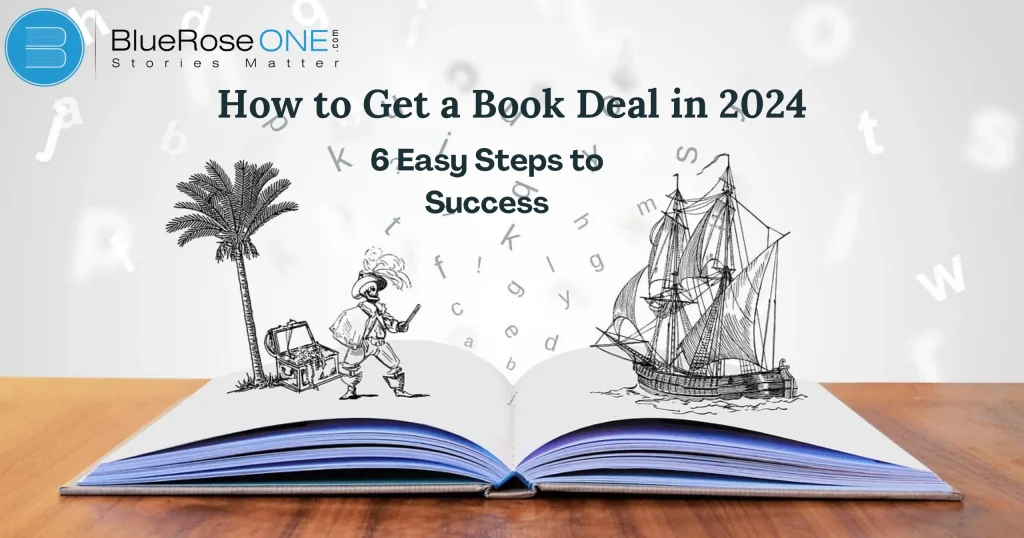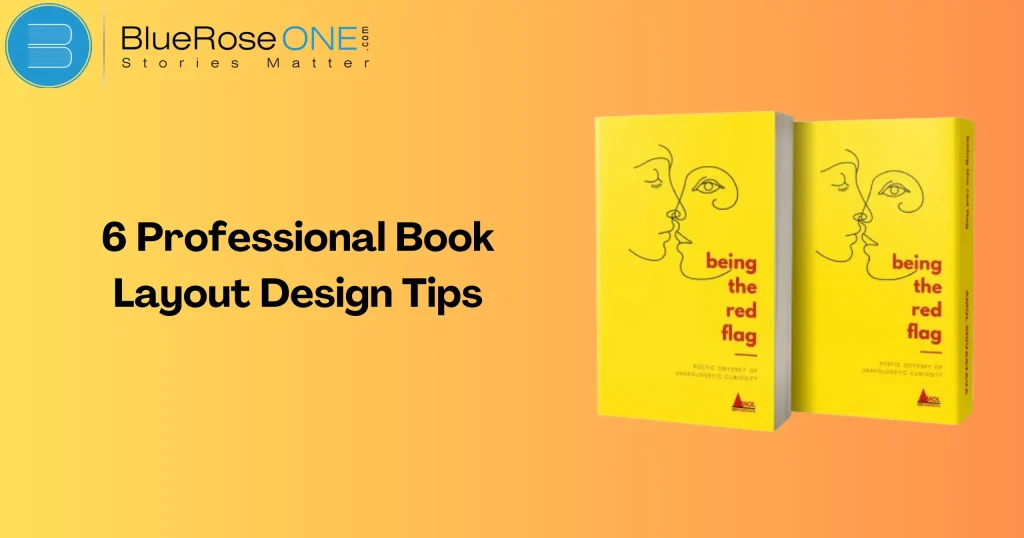
6 Professional Book Layout Design Tips
One of the most important steps in the publishing process is creating the layout of a book. A well-thought-out layout improves readability, draws readers in, and eventually increases sales. Knowing the fundamentals of book layout design is crucial whether you’re planning to self-publish or prepare your work for a formal publisher. The Basics of Book Layout What is a Book Layout? Book layout refers to the arrangement of text, images, and other elements on the pages of a book. It involves decisions about fonts, margins, spacing, alignment, and overall visual style. Elements of a Book layout? Key elements of a book layout include: Tip 1: Choose the Right Fonts Importance of Font Selection An important task for a book layout designer is choosing the appropriate fonts. Fonts affect your book’s readability as well as its overall design. A well-chosen font makes the content aesthetically pleasing and easy to read, which improves the reading experience for the reader. For the main text, stay away from extremely decorative fonts and use a clean, businesslike font like Arial or Times New Roman. Using the same typeface consistently throughout the book also contributes to its coherent appearance. Tips for Selecting Fonts Examples of Good Fonts for Books Tip 2: Focus on Margins and Spacing The Role of Margins in Book Design Margins are crucial for creating a polished and readable book. A professional book layout designer knows that proper margins ensure the text doesn’t feel cramped, making the book easier to read. They also provide space for readers to hold the book without covering the text. By balancing margins and spacing, a book layout designer can enhance the overall aesthetic and functionality of the book, resulting in a more enjoyable reading experience. How to Set Appropriate Margins Importance of Line Spacing and Paragraph Spacing Proper line spacing and paragraph spacing are crucial for a professional book layout designer. They enhance readability, ensuring that text isn’t cramped or overwhelming. Adequate spacing gives the reader’s eyes a break and makes the content more accessible and enjoyable. Consistent margins and spacing also contribute to the overall aesthetic, creating a balanced and polished look. As a book layout designer, paying attention to these details can significantly improve the quality of your book design. Tip 3: Use High-Quality Images and Graphics Importance of Visuals in a Book Layout Using high-quality images and graphics is crucial for any book layout designer. Visuals not only make the book more engaging but also help to break up text and make the content easier to digest. They can illustrate key points, set the tone, and enhance the reader’s experience. High-quality visuals ensure a professional look, which can significantly impact a book’s success and appeal to its audience. Tips for Selecting and Placing Images How to Ensure Images Are Print-Ready Tip 4: Maintain Consistency Throughout the Book Importance of Consistent Design One cannot stress how crucial consistent design is to a book. Ensuring consistency in book features such as fonts, margins, and spacing is the responsibility of a professional book layout designer. Maintaining consistency makes the book look polished and professional and facilitates a seamless reading experience. A unified layout improves reading and maintains reader interest, which is why readers value it. Consistency in design leaves a lasting pleasant impression and also indicates the caliber of the work. How to Maintain Consistency in Fonts, Headings, and Styles Tools and Software to Help with Consistency Tip 5: Pay Attention to Alignment and Justification Importance of Alignment in Text The alignment of text in a professional book layout design is crucial when it comes to perfect alignment of text and other elements of the overall layout. Proper alignment makes your text look neat and professional. It helps guide the reader’s eye and improves the overall readability of your book. Tips for Text Alignment and Justification Common Alignment Mistakes to Avoid Tip 6: Proofread and Review Your Layout Importance of Proofreading the Layout It is crucial to proofread the layout; this cannot be emphasized enough. A book layout designer makes sure that every component is positioned precisely to improve readability and visual attractiveness. Layout mistakes can drive readers away and detract from the overall value of your book. By carefully going over and editing the layout, you can guarantee a polished and expertly produced end product. A competent book layout designer will pay close attention to every detail, which will make your book stand out to publishers and readers alike. Tips for Effective Proofreading Tools to Help with Proofreading Conclusion When creating a professional book layout, typefaces, margins, photos, alignment, consistency, and proofreading must all be carefully considered. You may write a legible, visually beautiful book that will enthrall readers by using the advice in this article. Frequentlly Asked Questions What software can I use for book layout design? Adobe InDesign, Microsoft Word, and Scrivener are popular choices for book layout design, each offering different features and levels of control. How important are fonts in a book layout? Fonts are crucial as they affect readability and the overall aesthetic of your book. Choosing the right fonts can significantly enhance the reader’s experience. Can I design my book layout myself, or should I hire a professional? You can design your book layout yourself if you have the necessary skills and tools. However, hiring a professional can ensure a high-quality and polished result. How do I choose the right images for my book? Select high-resolution images that are relevant to your content and ensure they are print-ready by checking their resolution and color mode. What are common mistakes to avoid in book layout design? Avoid inconsistent fonts and styles, poor alignment, inadequate margins, and low-quality images. Ensuring thorough proofreading can also help catch and fix errors.
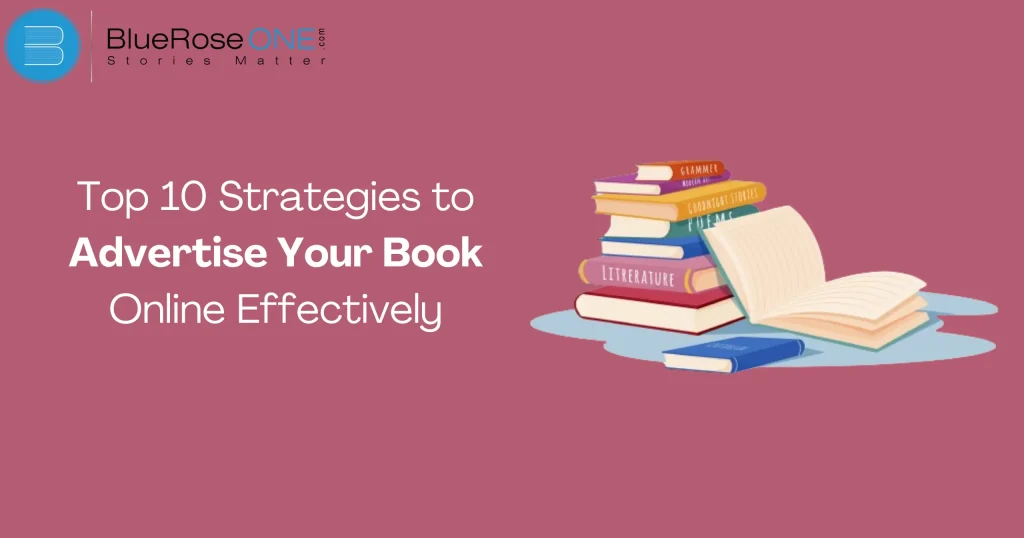
Top 10 Strategies to Advertise Your Book Online Effectively
The internet provides authors with a wealth of chances to promote their novels in the current digital era. Building a devoted fanbase, expanding one’s reach, and boosting book sales all depend on efficient online promotion. Let’s examine the top ten methods for successfully promoting your book online. Build a Strong Author Website Why an Author Website is Essential For your book to be effectively advertised, you must have an author website. It serves as an informational center for readers to learn about you, your writing, and forthcoming releases. You may communicate with your fans, post updates, and highlight your books on an author website. It also enhances your online visibility, which makes it simpler for prospective customers to locate and buy your book. To put it briefly, a well-designed website increases the visibility and sales of your book. Key Elements of an Effective Author Website An effective book selling author website needs a clean design, easy navigation, and clear calls to action to help you advertise your book. Include an engaging homepage, an informative “About” section, a dedicated page for each book, and a blog to connect with readers. Ensure your site is mobile-friendly and integrates social media links. By optimizing your website for search engines, you can attract more visitors and boost your book’s visibility online. Contact Information For your work to be promoted effectively, it is imperative that your author website have easily accessible contact information. Make it simple for journalists, readers, and possible partners to get in touch with you. Make sure to prominently display your contact form, social media links, and email address. By doing this, you may interact with your readers, develop bonds with them, and take advantage of opportunities to promote your work. Making sure you don’t lose out on important contacts that could increase the visibility and sales of your book is ensured by a robust contact section. You may also read: Top 10 Best Vampire Books of All Time Utilize Social Media Platforms Choosing the Right Platforms It is imperative to consider the platforms where your target audience spends the majority of their time when selecting which ones to use for book promotion. Twitter, Instagram, and Facebook are well-liked due to their varied user bases and broad reach. Goodreads is a great resource for readers. Make your material specific to the advantages of each platform. You may effectively promote your book to the right readers by carefully choosing and making the most of your presence on these channels. Regular Posting Schedule Retaining interest on social media requires a consistent posting schedule. You can maintain audience attention and create a sense of anticipation for your updates by delivering material regularly. Maintaining consistency facilitates the development of a robust online presence, which in turn simplifies book promotion. Teasers, behind-the-scenes photos, and reader testimonials are all examples of regular articles that can draw in and keep followers who will eventually become readers. Leveraging Hashtags Leveraging hashtags can significantly boost your book’s visibility on social media. By using popular and relevant hashtags, you can reach a broader audience interested in your genre or topic. For instance, hashtags like #BookLovers, #MustRead, or #BookRecommendations can attract potential readers. Consistently tagging your posts with these can help advertise your book to users who are actively searching for new reads, thus enhancing your online presence and engagement. You may also read: Looking for a Professional Book Layout Designer? Email Marketing Campaigns Building an Email List Building an email list is a crucial strategy in any successful email marketing campaign aimed at promoting your book online. It involves gathering a database of email addresses from interested readers and potential buyers. By offering valuable content or incentives, like exclusive sneak peeks or discounts, authors can entice visitors to subscribe. This list becomes a direct channel to communicate updates, new releases, and special offers, ensuring consistent engagement and boosting visibility for your book when you advertise it online effectively. Crafting Engaging Newsletters Developing interesting newsletters is essential to running a successful email marketing strategy to promote your book online. A well-written newsletter uses individualized content and attention-grabbing subject lines to draw in readers. Start with an attention-grabbing hook to get them interested, then give them useful information like book updates, access to unique material, or exclusive deals. To keep readers interested, choose layouts that are visually appealing and use clear, simple language. Provide a call-to-action to encourage conversions and pique readers’ interest by directing them to your book’s landing page or online store. You may also like: What is Internal Conflict? Definition, Examples, and Writing Tips Collaborate with Influencers Identifying Relevant Influencers The key to promoting your book online is finding relevant influencers. These influencers are people or organizations that have a sizable online following on social media or blogging platforms. Working together with influencers that share the same themes or genre as your book will help you reach their interested readership more widely. Seek for influencers whose fan base corresponds with your intended audience to make sure that their recommendation is genuine to readers. By collaborating with influencers, you may effectively promote your book online and increase visibility and possible sales by taking use of their authority and influence. Approaching and Collaborating with Influencers Reaching out to and working with influencers will improve your book promotion efforts significantly. Find influencers who share the same interests as the genre and readership as your book. Send them a note emphasizing the ways in which your book could help their following. Give away a free copy of your book and suggest original ideas for joint ventures, such as social media campaigns or reviews. Through this collaboration, you may efficiently reach a wider audience and draw in more readers, which will increase the visibility of your work. Leverage Online Book Communities Engaging in Forums and Groups Participating in discussion boards and groups is an effective approach to promote your work. Engaging with readers who are enthusiastic about your genre might be facilitated by participating in…
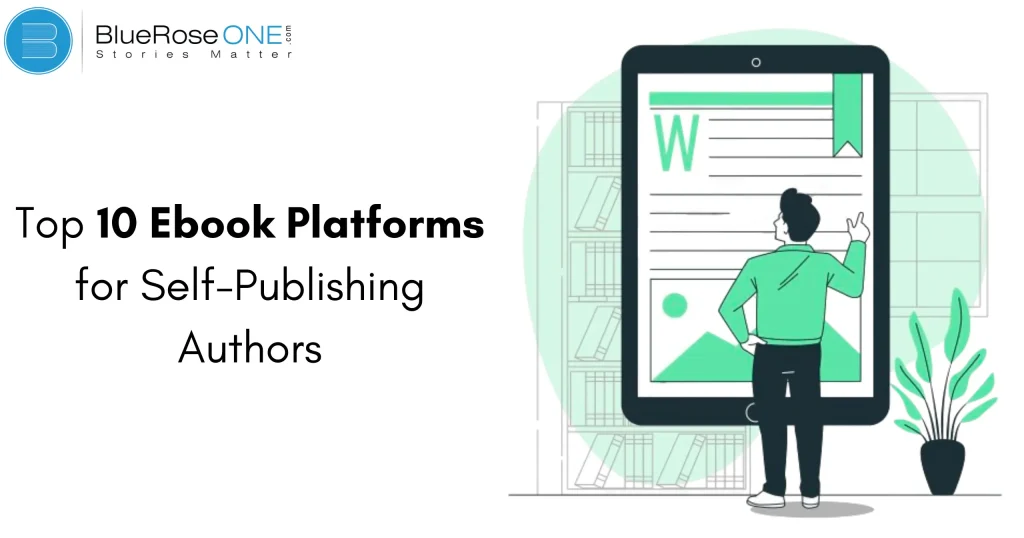
Top 10 Ebook Platforms for Self-Publishing Authors
Are you an aspiring author looking to self-publish your ebook? Choosing the right platform can make all the difference in your success. With so many options available, it can be overwhelming to decide which one is best for you. Don’t worry; we’ve got you covered! In this article, we’ll dive into the top 10 ebook platforms for self-publishing authors, examining their features, pros and cons, and pricing to help you make an informed decision. Amazon Kindle Direct Publishing (KDP) Amazon Kindle Direct Publishing (KDP) is one of the leading ebook platforms for self-publishing authors. It allows writers to publish their books directly to the Kindle store, reaching millions of readers worldwide. With KDP, authors retain control over their work, set their prices, and earn up to 70% royalties on sales. The platform offers useful tools for formatting and marketing, making it a popular choice for both new and experienced self-publishing authors. Features Wide Distribution: Reach millions of readers on Amazon. Royalties: Earn up to 70% royalties on sales. Kindle Unlimited: Option to enroll in KDP Select for more visibility. User-Friendly: Easy to navigate dashboard and publishing process. Pros and Cons Pros: Massive audience, promotional tools, high royalties. Cons: Exclusivity requirements for KDP Select, competitive market. Pricing Cost: Free to publish, with Amazon taking a percentage of sales. You may also like: How to Write An Epilogue: Step-By-Step Guide You may also read: 150+ Positive Words That Start with O to Brighten Your Vocabulary Apple Books One of the best ebook venues for authors that self-ublish is Apple Books. Through Apple devices, writers may connect with millions of readers. Authors can produce and publish their books anywhere in the world with simple-to-use tools. Features like editable layouts, marketing resources, and thorough sales reports are available in Apple Books. This platform makes self-publishing easy and allows writers to concentrate on their work while reaching a large readership. Features Integrated with Apple Devices: Seamless reading experience for Apple users. Global Reach: Access to international markets. Attractive Layouts: Tools to create visually appealing ebooks. Pros and Cons Pros: High-quality platform, wide reach, good for multimedia books. Cons: Requires an Apple device to publish, limited to Apple users. Pricing Cost: Free to publish, with Apple taking a cut of sales. Barnes & Noble Press One of the best ebook platforms for authors that self-publish is Barnes & Noble Press. Its user-friendly interface makes managing and uploading your ebook a breeze. It’s a desirable choice for both seasoned and novice writers because of the competitive royalties and no upfront expenses. The extensive readership of the platform also benefits authors, whose works are prominently displayed on Barnes & Noble’s website and Nook devices. Features Retail Presence: Books can be featured in B&N stores. Print Options: Option to publish print books. Promotional Tools: Marketing tools to boost visibility. Pros and Cons Pros: Strong retail presence, print book options, promotional tools. Cons: Smaller audience compared to Amazon, limited international reach. Pricing Cost: Free to publish, with Barnes & Noble taking a percentage of sales. You may also like: What is Denouement in literature? Definition and Importance Kobo Writing Life An easy-to-use ebook platform ideal for self-publishing authors is Kobo Writing Life. Its user-friendly interface makes it simple to upload your cover art and manuscript. With distribution to millions of readers in more than 190 countries, Kobo offers worldwide availability. Authors keep the ability to set their own prices and can earn royalties of up to 70% on sales. With thorough analytics, you can monitor the sales of your book and take data-driven decisions to increase your chances of success in the realm of self-publishing. Features Global Distribution: Reach readers in over 190 countries. Royalty Rates: Up to 70% royalties on sales. Flexible Terms: No exclusivity requirements. Pros and Cons Pros: Global reach, high royalties, no exclusivity. Cons: Smaller market share in the US, requires additional marketing efforts. Pricing Cost: Free to publish, with Kobo taking a cut of sales. Smashwords Popular ebook platform Smashwords provides self-publishing authors with an easy way to distribute their books all around the world. Established in 2008, it offers resources for converting manuscripts into several e-book formats, facilitating authors’ efforts to reach a large readership. Smashwords provides self-publishers with wide exposure by distributing ebooks to major stores such as Apple Books, Barnes & Noble, and Kobo. For writers who want to increase their readership and streamline the publishing process, this platform is perfect. Features Multiple Formats: Distributes to numerous retailers and libraries. Marketing Tools: Coupons, discounts, and other promotional tools. Easy Conversion: Simple process to convert manuscripts into ebooks. Pros and Cons Pros: Wide distribution, supportive of indie authors, marketing tools. Cons: Interface can be outdated, lower royalties compared to direct publishing. Pricing Cost: Free to publish, with Smashwords taking a percentage of sales. You may also like: How to Publish a Book? | Publish Your Book | BlueRoseOne Draft2Digital Draft2Digital is a popular ebook platform for self-publishing authors. It offers an easy-to-use interface, helping writers convert their manuscripts into professional ebooks. With Draft2Digital, authors can distribute their books to major retailers like Amazon, Apple Books, and Barnes & Noble. This platform also provides useful tools for formatting and managing royalties. Overall, Draft2Digital simplifies the self-publishing process, making it accessible for authors at any level. Features Wide Distribution: Distributes to major retailers and libraries. Automated Formatting: Converts manuscripts into multiple ebook formats. Royalty Payments: Consolidated payments from all retailers. Pros and Cons Pros: Easy to use, wide distribution, great customer support. Cons: Takes a percentage of sales, not as well-known as some competitors. Pricing Cost: Free to publish, with Draft2Digital taking a small cut of sales. BlueRose Publishers BlueRose Publishers is one of the leading self publishing platform and one of the industries oldest which offers wide range of publshing services like polishing of the manuscript, distribution and extensive marketing .BlueRose Publishers has its own ebook platform which is very convenient…
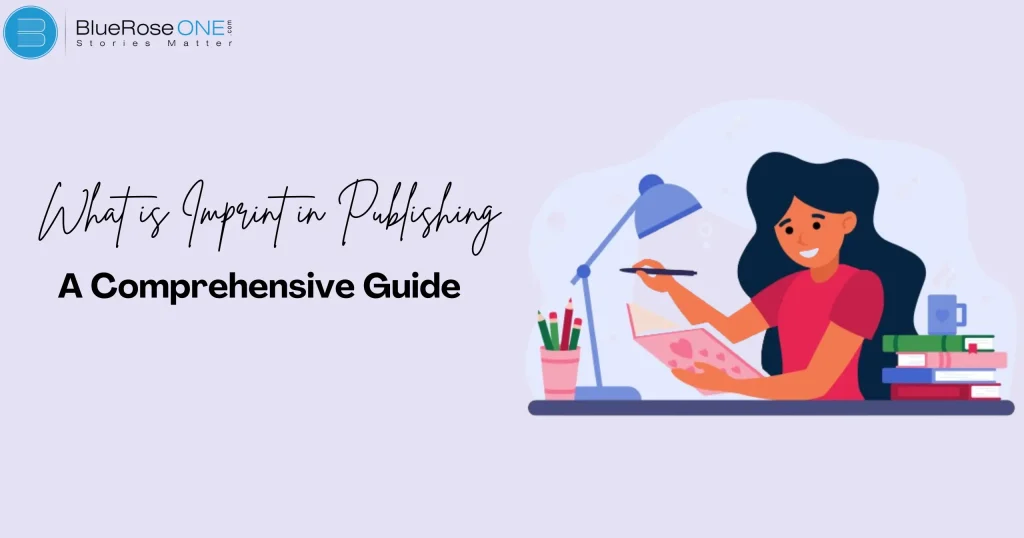
What is an Imprint in Publishing? A Comprehensive Guide
The phrase “imprint” is frequently used in the publishing industry, but what does it really mean? Understanding imprints is essential whether you’re an experienced writer, an aspiring writer, or someone who is just interested in the publishing business. This in-depth manual will explore the idea of imprints, their function in the publishing sector, and the ways in which they may affect your writing career. What is an Imprint? In the publishing industry, an imprint is a particular brand or branch that falls within a bigger publishing corporation. By concentrating on a specific genre or readership, each imprint enhances the efficiency of book marketing. For instance, whilst one imprint focuses on mystery novels, another can specialize in children’s books. This enables publishers to customize their marketing approaches and broaden their product offerings. Authors and readers can navigate the publishing business more skillfully if they have a better understanding of what an imprint is. Historical Background of Imprints The earliest days of printing are when the idea of imprints first emerged. They were originally used to denote the printer or publisher of a book. They changed over time to symbolize several divisions or areas of expertise within a publishing business. You may also like: What is Novella? Structure, Length, and Key Elements The Role of Imprints in Publishing Purpose and Function Within a publishing business, an imprint functions as a brand, aiding in the classification and promotion of publications to particular markets. Through imprints, publishers can establish robust identities and reputations by concentrating on specific genres or themes. This area of expertise promotes trust and loyalty by making it easier for readers to recognise the kind of content they like. Being connected to a reputable imprint can help authors become more visible and credible in the cutthroat world of publishing. How Imprints Influence Publishing Decisions Because imprints make it easier for publishers to target particular audiences and genres, they are very important when making publishing decisions. Because each imprint has a distinct brand and reputation, it is easier to market and place books in specific niches. This specialization increases the likelihood that a book will succeed by allowing publishers to accommodate a wide range of reader preferences. BlueRose Publishers may make more strategic and intelligent decisions about publishing by utilizing the advantages of many imprints. Types of Imprints Major Publishing House Imprints Large publishers like BlueRose Publishers, HarperCollins, and Simon & Schuster operate multiple imprints. Each imprint has its own editorial team, marketing strategies, and distinct brand identity. Independent Publisher Imprints Smaller divisions of independent publishing houses are known as independent publisher imprints. These imprints offer for more creative flexibility and experimentation because they frequently concentrate on niche genres or distinctive voices. Independent imprints may be more adaptable in their author relationships and publication tactics than major publishers. They are a vital component of the varied publishing ecosystem since they give up-and-coming authors and unique stories a platform. Independent imprints contribute to the market’s rich diversity of books. Digital and Self-Publishing Imprints Authors and small publishers establish digital and self-publishing labels to independently disseminate their books, frequently via internet channels. More control over the publishing process, including marketing, cover design, and editing, is possible with these imprints. Without the requirement for conventional publishing contracts, authors can publish their work immediately through self-publishing imprints and reach a worldwide audience. Because of their accessibility and versatility, digital imprints are widely used in today’s publishing environment. You may also read: What is Internal Conflict? Definition, Examples and Writing Tips Benefits of Imprints for Authors Niche Targeting and Market Specialization An imprint is a term used to describe a publishing house’s speciality branch or division that concentrates on particular genres, themes, or target markets. For authors, imprints are essential for market specialization and niche targeting. Authors can reach a specific audience interested in their genre or theme by connecting with an imprint. With this targeted strategy, authors can connect with their readership on a deeper level and build a devoted following that is eagerly awaiting their next release, all while increasing visibility and revenue potential. Enhanced Brand Recognition An imprint can greatly enhance an author’s brand recognition in the publishing industry. Authors can capitalize on reader trust and visibility by affiliating with a reputable label. Increased sales and a wider readership can result from readers being more inclined to recognise and trust books published under that imprint, thanks to enhanced brand recognition. This affiliation not only increases the author’s legitimacy but also helps them break into new markets and expose their writing to a larger audience. Increased Marketing and Promotional Support Increased marketing and promotional support is a significant benefit that authors gain through imprints in publishing. Imprints are specialized divisions of larger publishing houses that focus on specific genres or themes, allowing for targeted promotional strategies. This support can include dedicated advertising campaigns, enhanced visibility in bookstores, and tailored outreach to relevant media outlets. By leveraging the imprint’s resources, authors can amplify their book’s exposure and reach their target audience more effectively, ultimately boosting sales and readership engagement. How to Choose the Right Imprint for Your Book Assessing Your Genre and Audience The first step in choosing the best imprint for your book is to determine its category and target readership. Knowing your genre can assist you identify the publishing house that specializes in books comparable to yours, so you can make sure your work fits in with their publishing philosophy. Finding your target audience the readers who will connect with your narrative the most is equally crucial. By taking this step, you can be sure that the imprint you select will have the marketing and distribution channels necessary to reach your target audience and maximize the impact and sales of your book. Researching Imprint Reputations In examining imprint reputations for your book, it’s critical to consider their experience and areas of expertise. The reputation of an imprint is a reflection of both how readers view its books and its publication history. Check for…
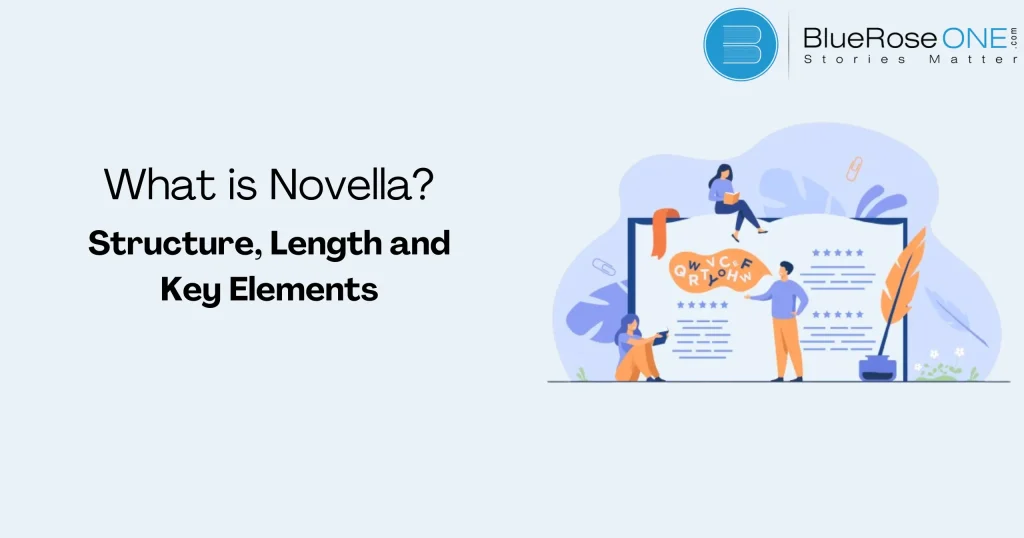
Novella: Structure, Length, and Key Elements
Have you ever read a story that is both shorter than a novel and longer than a short story? I bet that’s a novella! However, what precisely is a novella? For both readers and writers, an understanding of this distinctive literary form can lead to new opportunities. Now let’s get started and examine novellas in detail. You may also like: The 7 Best Fantasy Book Series of All Time The Structure of a Novella The structure of a novella typically includes a clear beginning, middle, and end, similar to a novel but more concise. It focuses on a central conflict and develops characters more deeply than a short story. Unlike longer novels, novellas avoid subplots, maintaining a tight, fast-paced narrative. This compact structure allows for a more intense and focused exploration of the story’s themes and characters, making novellas a unique and engaging form of storytelling. Basic Structure A novella usually has a basic framework that is more condensed than that of longer books. It has three parts: an opening that introduces the story and its characters, a middle section that advances the storyline and heightens the suspense, and a finale that settles the dispute. A novella’s small length—typically 20,000–50,000 words—allows it to keep a focused narrative, frequently with just one major storyline rather than the multiple subplots that lengthier works tend to include. You may also like: Literary Elements: A Complete List of Powerful Literary Devices Comparison with Novel and Short Story In terms of length and content, a novella is different from both a novel and a short story. A novel delivers a more intricate and thorough narrative than a short story, which is condensed and concentrates on a single event or character. On the other hand, a novella finds a balance between having a tighter, more focused plot than a novel and offering more depth than a short story. A novella’s distinct format makes it possible to explore themes and characters in a condensed but impactful manner. You may also read: Fatal flaw: Definition, Types, Examples and More Key Components A novella’s key components include a focused plot, well-developed characters, and a central theme. Unlike a novel, a novella maintains a brisk pace with fewer subplots and concise storytelling. Its length, typically between 20,000 and 50,000 words, allows for depth without the complexity of a full-length novel. You may also like: Top 10 Best Vampire Books of All Time Length of a Novella Word Count Range A novella is longer than a short tale but shorter than a novel, usually having between 20,000 and 50,000 words. Compared to shorter works, this word count enables more intricate story development and in-depth character study. Because of its short length, the novella is perfect for readers looking for a quick yet engaging read. It provides a compelling story without the time commitment of a full-length novel. Differences from Other Literary Forms It’s critical to comprehend how novellas vary from other literary forms while determining their duration. A novella is longer than a short tale but less than a novel, usually falling between 20,000 and 50,000 words. Novellas have a more intricate plot and greater character development than short works. Nonetheless, they concentrate on a single story arc and are shorter than novels. Novellas’ special length enables them to delve deeper into topics without the commitment of a full-length book. You may also read: What is an Anti-Hero? Traits, Motivations, & Famous Authors Key Elements of a Novella Plot A novella’s plot is crucial to maintaining readers’ interest. Novellas, as opposed to novels, concentrate on a single, succinct plot with few supporting characters. Because of its condensed style, the novella is able to keep up a fast pace and rapidly grab readers. A novella’s plot typically revolves around a single central conflict or theme, with fewer characters and an uncomplicated narrative style, offering a rich and engaging reading experience in a condensed amount of time. Characters Characters are essential to a novella’s plot because of its condensed format. Novellas, as opposed to longer books, usually have a smaller cast, which enables each character to get concentrated development and make a major contribution to the plot. These characters are frequently given much attention, and the development of the plot depends heavily on their motivations and conflicts. Novellas can explore the nuances and relationships of a small number of people in more detail by focusing on them, which results in a deep and engaging reading experience that prioritizes depth over breadth. Settings The setting of a novella greatly influences the mood and ideas of the story. Novellas, as opposed to longer books, frequently concentrate on a particular, closely knit setting that heightens the impact of the story. This location becomes more than just a background; it becomes essential to the experiences of the characters and the progression of the story. Authors can heighten the emotional and thematic impact of a novella by immersing readers in a compact yet richly detailed universe through careful setting selection and vivid description. You may also read: Literary Fiction vs Genre Fiction: Definition & Examples Theme In a novella, the theme is a central element that drives the narrative’s meaning and resonance. Unlike longer novels, novellas focus sharply on a single theme or idea, exploring it with depth and intensity. This concentrated exploration allows novellas to deliver powerful emotional and intellectual impacts within a shorter length. Themes in novellas often tackle complex human experiences such as love, loss, identity, or societal conflict, offering readers a profound and concentrated literary experience. Understanding the theme helps readers grasp the novella’s purpose and underlying message effectively. Conflict Conflict is essential to moving the plot of a novella forward. Usually, the main characters have to overcome difficulties or roadblocks in order for the narrative to progress towards its conclusion. These conflicts can be external, like conflicts with other characters or pressures from society, or internal, like personal problems or emotional quandaries. Writers can craft a captivating and tightly focused plot that captivates readers from beginning to…
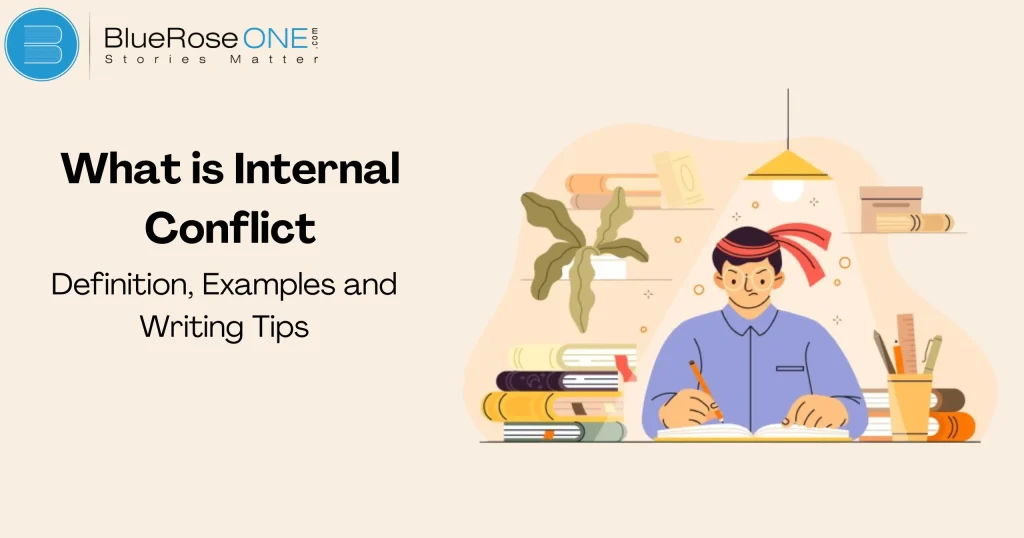
What is Internal Conflict? Definition, Examples, and Writing Tips
What exactly qualifies as a captivating character? Frequently, it’s their internal conflict, the war they are fighting within. Their judgements, behaviors, and eventually, their destiny are shaped by this unseen tug-of-war. However, what is internal conflict precisely, and why is it so important in narratives? Let’s get started and explore the intricacies of internal conflict, including its various forms, instances, and effective writing techniques. Internal conflict occurs within a character’s mind, where they struggle with opposing desires, emotions, or beliefs. It’s the quintessential “man vs. self” dilemma, often driving the narrative’s emotional depth. You may also like: Top Creative Nonfiction Books to Spark Your Imagination Difference Between Internal and External Conflict Internal conflict is all about the struggle within the individual, whereas external conflict sets the character against an external force (such as another character, society, or nature). While both are necessary, internal struggle gives people a psychological depth that helps them come across as genuine and approachable. Types of Internal Conflict Emotional Conflict Internal conflict, often known as emotional conflict, is a crucial component of narrative in which characters struggle with their own emotions, wants, or convictions. Tension and drama are produced when a character experiences this kind of internal conflict. For example, emotional conflict arises when the protagonist is caught between familial obligations and personal goals. It gives stories more levels of complexity by enhancing character and story dynamics. Internal conflict is a tool used by writers to delve into psychological depths and push their characters towards development or internal resolution. You may also read: Fatal Flaw: Definition, Types, Examples and More Moral Conflict Moral conflict in fiction is a basic kind of internal conflict that revolves around moral choices that characters must make. It happens when a character has to decide between moral imperatives that conflict with one another or between right and wrong. Characters that engage in this kind of conflict frequently experience mental stress as they struggle with their morals, ethics, and sense of right and wrong. A protagonist might debate whether to betray a friend for the sake of the greater good, for example, underscoring the difficult decisions that fuel internal conflict in stories. Intellectual Conflict An internal conflict in narrative is referred to as “Intellectual Conflict” and occurs when a character must make a decision on ideas, values, or beliefs. This struggle frequently occurs when the character has to make moral judgements, ethical conundrums, or difficult internal philosophical discussions. Intellectual conflicts, as opposed to emotional or interpersonal ones, center on the struggle with logic and judgment inside oneself. To illustrate the struggle between social consequences and personal integrity, consider a protagonist who is split between revealing the truth and remaining loyal to a friend. This could lead to intellectual conflict. You may also like: Plot Twists Vs. Red Herring: Understanding the Difference Examples of Internal Conflict in Literature Classic Literature Examples Modern Literature Examples How to Identify Internal Conflict in Your Writing Character Development Internal conflict in fiction refers to a character’s internal emotional battle, which frequently moves the plot along. The plot gains complexity and suspense when it unveils the character’s inner struggle, misgivings, or moral quandaries. This kind of conflict is centered on competing decisions, beliefs, or aspirations rather than just outside barriers. An internal conflict might be exemplified, for example, by a protagonist who is divided between pursuing personal goals and being loyal to family. Writers can enhance character development and establish a strong emotional connection with readers by delving into these internal conflicts. Plot Progression Plot progression in storytelling describes how the story’s events evolve and change over time. It’s essential for illustrating internal conflict, in which characters battle with their own feelings, judgements, or convictions. The conflict advances the plot by giving the characters stress and depth, which draws readers in and enhances the reading experience. Writers can effectively portray internal conflict by carefully arranging the plot progression. This allows them to showcase the inner challenges that define character development and connect with audiences on a deeper level. Dialogue and Monologue Dialogue and monologue are crucial literary devices for expressing internal turmoil. Through dialogue, people converse with one another, letting the reader in on their contradictory feelings, ideas, and intentions. Through interactions, it enables a dynamic examination of inner turbulence. Conversely, a monologue offers an inside look at a character’s innermost feelings and ideas, providing a better understanding of their challenges and problems. By offering subtle insights into the intricacies of psychological struggle, these strategies enhance storytelling by generating tension in the story and fostering character growth. You may also read: Narrative Structure: Definition, Examples and Writing Tips The Role of Internal Conflict in Character Development Making Characters Relatable Internal tension is crucial to developing likable personalities. A character’s internal emotional conflict propels their growth and connects with readers. Characters experience internal conflict, which adds complexity and tension as they struggle with opposing impulses, beliefs, or feelings. Authors make characters likable and compelling by genuinely depicting these internal conflicts in their characters. Because they recognise parallels to their own problems and conflicts, readers are able to relate to the characters’ internal struggles. This relationship increases interest in the narrative and makes internal conflict an effective tool for character development. You may also like: 10 Best Books on Writing Every Aspiring Author Should Read Driving Character Arcs Internal conflict is essential to the progression of character arcs in storytelling. It describes the internal psychological conflict that a character has, frequently between their feelings, beliefs, and desires. Because it influences the character’s decisions and development throughout the story, this conflict is crucial. For instance, a protagonist who is conflicted over whether to follow moral principles or pursue ambition must find a solution in order to grow as a person. Internal conflict is a tool used by authors to give their characters greater nuance, complexity, and relatability, which increases reader interest and appeal. You may also like: How to Publish a Book? | Publish Your Book | BlueRoseOne Internal Conflict and Plot Development Creating…
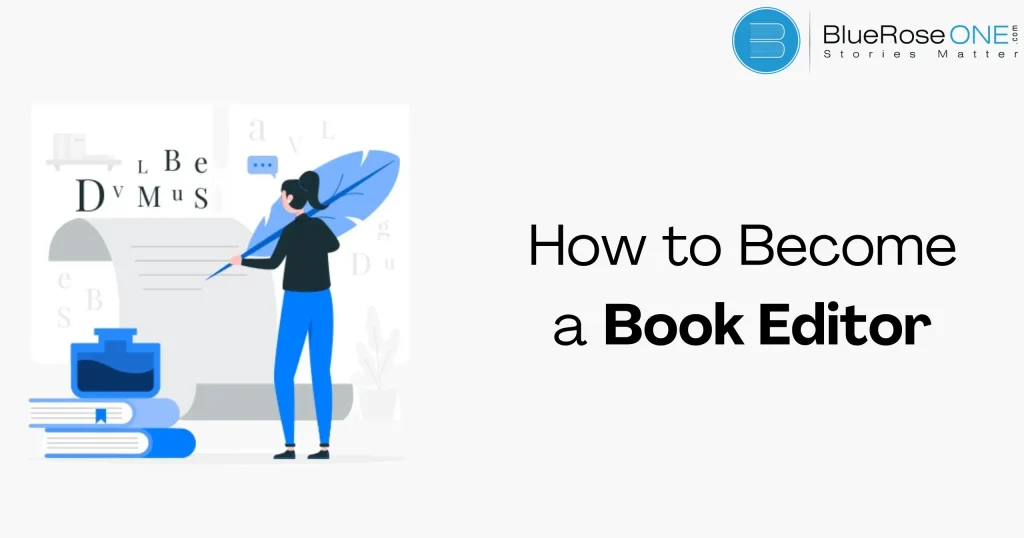
How to Become a Book Editor – BlueRoseOne.com
Ever wonder who crafts the novels we read into well-crafted works of art? That’s what editors of books do! They are essential to the publishing industry because they make sure that every book is readable, interesting, and free of errors. A career as a book editor can be ideal for you if you have an eye for detail and are passionate about reading. Now let’s explore the procedures you must follow in order to work as a book editor. Understand the Role of a Book Editor A book editor is responsible for reviewing and improving manuscripts. They work closely with authors to enhance the structure, content, and language of a book. Their goal is to make the text more readable and engaging for the target audience. This involves correcting grammatical errors, ensuring consistency, and sometimes even restructuring parts of the manuscript. Different Types of Book Editors Developmental Editors Developmental editors focus on the big picture of a manuscript, helping authors shape their stories and structure. They work on plot development, character arcs, pacing, and overall coherence. Unlike other types of editors, developmental editors often engage with authors early in the writing process. Their goal is to ensure the book’s content is engaging and logically organized, making it a crucial step for any aspiring book editor aiming to master the craft. Copy Editors In the book editing process, copy editors are quite important. They make sure that the style and tone are consistent while concentrating on fixing spelling, grammatical, and punctuation mistakes. Their meticulous attention to detail results in a polished and polished copy that is easier to read and understand. Copy editors improve the book’s overall quality and reader appeal by attending to these details. Learning the craft of copy editing is frequently the first step towards becoming a competent book editor. Proofreaders Proofreaders are a crucial type of book editor. Their primary role is to review the final draft of a manuscript for spelling, grammar, punctuation, and formatting errors. Unlike other editors, proofreaders focus on the surface-level details to ensure the book is polished and error-free before publication. This meticulous attention to detail helps maintain the book’s professional quality and readability, making proofreaders an essential part of the book editing process. Skills Required to Become a Book Editor Attention to Detail Attention to detail is crucial for a book editor. It involves catching grammar mistakes, spelling errors, and inconsistencies in the text. A keen eye ensures the manuscript is polished and professional, enhancing the reader’s experience. Being meticulous also means understanding the author’s voice and style, ensuring the edits align with their vision. This skill helps a book editor maintain the integrity of the work while improving its clarity and readability. Strong Grasp of Language and Grammar For a book editor, having a solid command of language and grammar is crucial. This ability makes the material more entertaining for readers by guaranteeing that it is clear, cohesive, and error-free. An editor of books must be able to identify and fix errors in grammar, punctuation, and sentence construction. The book editor can preserve grammatical integrity while bringing out the author’s voice through skillful use of stylistic nuances and linguistic norms. This knowledge is essential to writing polished, business-like texts. Excellent Communication Skills Good communication skills are necessary to succeed as a book editor. An editor of books has to make sure that authors receive comments in an understandable and useful way. Editors frequently need to discuss corrections and provide clarification, thus this covers both written and verbal contact. A positive working connection with authors is fostered by effective communication, which facilitates a more efficient and effective editing process. Time Management and Organizational Skills For those who want to work as book editors, time management and organizing abilities are crucial. You must effectively manage several projects, deadlines, and responsibilities when working as a book editor. You can prioritize editing projects, set aside enough time for in-depth reviews, and fulfill publication deadlines when you practice effective time management. Having organizational abilities makes it easier to keep track of changes, keep workflows organized, and guarantee that edited manuscripts are coherent and clear. Book editors can become more productive, produce better work, and build a solid reputation for dependability in the publishing sector by learning these skills. Educational Background and Training Relevant Degrees and Certifications Obtaining the necessary degrees and certifications is essential to work as a book editor. A bachelor’s degree in communications, journalism, English, or a similar discipline offers a foundation in language and writing. A master’s degree in editing, publishing, or creative writing is a common path taken by editors who want to enhance their education and gain a deeper understanding of industry standards and editorial procedures. Credibility and competence in the field of book editing can also be shown by certifications from associations such as the Editorial Freelancers Association (EFA) or the American Society of Journalists and Authors (ASJA). These credentials equip editors to proofread manuscripts efficiently and guarantee publications of the highest value. Workshops and Seminars Workshops and seminars are essential when it comes to providing prospective book editors with the necessary training and educational background. These workshops provide useful insights into a range of editing topics, including style, grammar, document assessment, and publication trends. By taking part in seminars, aspiring editors can hone their craft, remain current with industry norms, and expand their professional network within the publishing community. The practical activities and knowledgeable direction offered in these environments are priceless for developing the editorial grace and critical eye needed to succeed in the book editing profession. Gaining Experience Internships and Entry-Level Positions An internship or an entry-level job are frequently the first steps towards gaining experience as a book editor. These positions offer practical chances to pick up editing skills and obtain knowledge about the publishing sector. Through internships, prospective book editors can gain practical experience under seasoned professionals, enhancing their abilities in manuscript assessment, proofreading, and style adherence. These abilities are furthered in entry-level jobs…

Website for Writers: Showcasing Your Portfolio and Building Your Brand
In today’s digital age, having a website for writers is essential. Your personal website acts as a central hub to showcase your portfolio, build your brand, and connect with your audience. Whether you’re a novelist, freelance writer, or blogger, a well-crafted website for writers can significantly boost your career. This article will guide you through the essential elements of creating a successful website for writers, covering everything from design and content creation to SEO and promotion. Why Every Writer Needs a Personal Website Establishing Your Online Presence Establishing your online presence is crucial for success in today’s digital age. A personal website for writers acts as a central hub where you can showcase your portfolio, share your blog, and attract potential clients or publishers. It enhances your visibility, making it easier for readers to find you and your work. Additionally, a well-designed website for writers can be a powerful tool for making money, through book sales, freelancing opportunities, and affiliate marketing. Control Over Your Content For writers, having a personal website gives you total control over your work. In contrast to social media platforms, where guidelines and algorithms are subject to frequent changes, your website gives you complete control over how your work is presented. You may interact directly with your audience, present your portfolio, and use monetization techniques without interference from outside parties when you have this control, which is essential for growing your brand and generating revenue. Your website turns into the focal point of all of your writing activities. Professionalism and Credibility Having a personal website for writers is essential for establishing professionalism and credibility. A well-crafted site showcases your portfolio, making it easier for clients and readers to see your work. This can lead to more opportunities for making money, as potential clients are more likely to hire someone who appears professional and credible. Your website acts as a central hub where you can present your best work, contact information, and testimonials, enhancing your reputation in the writing community. You may also like: How to Make Money by Writing Books: 8 Tips for Success Key Elements of a Writer’s Website Clear and Concise Homepage A clear and concise homepage is crucial for a website for writers looking to build their brand and start making money. Your homepage should immediately convey who you are and what you offer. Include a brief bio, a professional photo, and links to your portfolio and services. Avoid clutter to ensure visitors can quickly understand your value. A streamlined, well-organized homepage helps convert visitors into clients, boosting your chances of making money through your writing. About Me Page An “About Me” page is essential for a website for writers. It helps readers connect with you and understand your journey. Share your background, writing experience, and what inspires you. This page can build trust and attract potential clients, aiding in making money through your writing services or book sales. Keep it engaging and personal to leave a lasting impression on visitors. Portfolio Section A writer’s website portfolio is a vital component for promoting their abilities and drawing in clients. It functions as a digital CV, showcasing your greatest writing in a variety of forms and genres, including blog entries, articles, and creative essays. Writers may showcase their style and experience to publishers and employers by building a professional portfolio. This not only builds credibility but also makes it easier to get paid for freelance work, book deals, and joint ventures. Establishing a successful writing career and creating a powerful online presence require a well-structured Portfolio section. Contact Information On a writer’s website, having clear and accessible contact information is crucial. This includes providing an email address or a contact form where visitors can reach you easily. This ensures potential clients or collaborators can connect with you effortlessly, enhancing your chances of landing projects and making money through your writing. You may also like: Top 10 Best Vampire Books of All Time Designing Your Website Select a Platform When designing your website for writers aimed at showcasing your portfolio and building your brand, choosing the right platform is crucial. Look for platforms that cater specifically to creatives, offering features like easy portfolio integration, customizable templates, and e-commerce capabilities for selling your work. WordPress, Squarespace, and Wix are popular choices due to their user-friendly interfaces and robust design options. These platforms not only help you present your writing effectively but also provide opportunities for monetization, making money through book sales, freelance services, or courses you offer. Selecting a Theme When designing your website for writers, selecting a theme is crucial for showcasing your portfolio and building your brand effectively. Your theme should reflect your writing style and genre, creating a professional and cohesive look that appeals to your target audience. Choose a theme that is easy to navigate, emphasizes visual appeal, and supports features like integrated portfolios or e-commerce tools if you plan on selling books or services directly from your site. This strategic choice not only enhances user experience but also increases your chances of making money through your writing ventures. Customizing the Layout When designing your website for writers with the goal of showcasing your portfolio and making money, customizing the layout is crucial. Tailor your site’s design to highlight your writing samples, services offered (like editing or coaching), and testimonials prominently. Use a clean, professional layout that is easy to navigate, ensuring visitors can quickly find and explore your work. Incorporate a user-friendly interface with clear sections for blog posts, contact information, and a portfolio gallery to impress potential clients or publishers visiting your site. Creating Compelling Content Writing an Engaging Bio Creating a compelling bio on your website for writers is crucial for showcasing your portfolio and building your brand. Your bio should succinctly highlight your writing expertise, unique voice, and relevant achievements. Start with a captivating introduction that grabs attention, then mention your writing experience and genres you specialize in. Include links to published works or testimonials to establish…
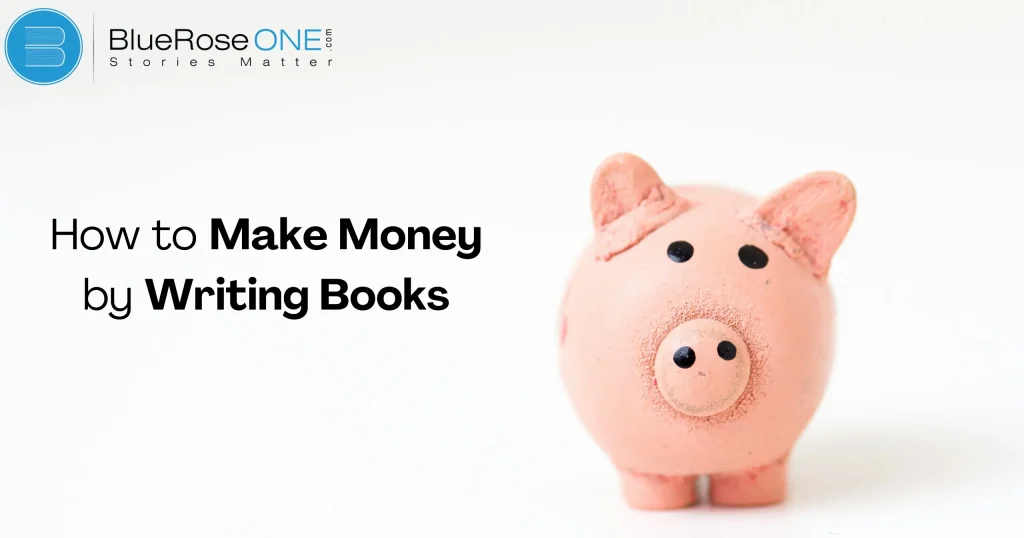
How to Make Money by Writing Books: 8 Tips for Success
Writing books can be a fulfilling and lucrative endeavor if approached with the right strategies. Whether you’re an aspiring author or a seasoned writer, Our useful tips will help you find out how to make money by writing books or stories. Let’s dive in! Understand the Book Market Researching Popular Genres Researching popular genres is crucial for writing books and making money. Start by examining bestseller lists, book reviews, and reader forums to identify what genres are currently trending. Focus on genres with high demand and loyal readerships, such as romance, mystery, or fantasy. Analyzing market trends helps you tailor your book to meet reader expectations and increases your chances of success, ensuring your writing efforts are both enjoyable and profitable. Identifying Your Target Audience Determining your intended readership is essential for both book writing and book sales. Understanding your target audience will assist you write for their wants and interests in your book. Investigate factors such as age, gender, and hobbies first. Utilize market research, social media insights, and surveys to collect information. Knowing your target increases the attractiveness of your book and facilitates marketing initiatives, which in turn helps you reach more readers and close more deals. Developing Your Skill Set Writing Consistently Writing consistently is key to improving your skill set and making money by writing books. By setting aside regular time for writing, you not only enhance your writing ability but also increase your productivity. This habit helps you complete projects faster, allowing you to publish more books and generate income. Consistency builds discipline, which is crucial for meeting deadlines and achieving long-term success in the competitive world of book writing. Getting Input and Editing To succeed in writing books and making money, seek feedback from trusted sources. Share your work with fellow writers, friends, or writing groups for honest input. Book editing is essential; it refines your story, ensures clarity, and enhances the overall quality. Consider hiring a professional editor to polish your manuscript. This investment can significantly increase your book’s chances of success, ultimately helping you make money from your writing efforts. How to Write an Enticing Book Proposal Writing a compelling synopsis is essential for writing books and making money. A synopsis should briefly summarize your story, highlighting the main plot, key characters, and unique elements. Keep it engaging and concise, focusing on what makes your book stand out. A well-crafted synopsis can grab an agent’s or publisher’s attention, increasing your chances of getting published and ultimately making money from your writing. Developing a Detailed Outline Developing a detailed outline is crucial when writing books with the aim of making money. An outline serves as a roadmap, helping you organize your ideas and structure your book effectively. Start by brainstorming key themes and chapters, then outline each chapter with main points and subtopics. This process not only clarifies your book’s direction but also makes the writing process smoother and more efficient. A well-crafted outline can attract publishers and readers alike, demonstrating a clear vision and potential market appeal for your book. Selecting Between Self-Publishing and Traditional Publishing Pros and Cons of Self-Publishing Selecting between self-publishing and traditional publishing involves weighing several factors for writers aiming to make money by writing books. Self-publishing offers greater control and faster time to market, allowing authors to keep a higher percentage of royalties. However, it requires more effort in marketing and distribution, which can be daunting for beginners. Traditional publishing, while offering wider distribution and potential advance payments, often involves longer wait times and less control over the final product. Writers must consider their goals in writing books and making money to decide the best path forward. Benefits of Traditional Publishing Traditional publishing has numerous important advantages over self-publishing when it comes to writing books and earning money. First of all, conventional publishers frequently offer a greater degree of legitimacy and status, which can draw in a larger readership and boost book sales. Furthermore, authors are usually paid in advance, which helps them financially support their literary endeavors. Additionally, traditional publishers take care of things like design, distribution, and editing, allowing authors to concentrate more on writing. Finally, they have existing networks that can improve book visibility and raise the likelihood of success in the cutthroat industry. Effective Book Marketing Strategies Building an Author Platform Building an author platform is crucial for writers aiming to make money by writing books. It involves creating a strong online presence through websites, blogs, and social media to connect with readers and promote your work. By consistently sharing valuable content related to your writing niche and engaging with your audience, you can build a loyal following. This platform not only helps in marketing your books but also establishes your credibility as an author, increasing your chances of success in the competitive world of publishing. Utilizing Social Media Regarding successful book marketing tactics, utilizing social media can significantly boost your chances of making money by writing books. Platforms like Facebook, Instagram, and Twitter offer powerful tools to connect directly with your target audience. By sharing engaging content, interacting with followers, and running targeted ads, you can increase visibility for your books and drive sales. Social media also allows you to build a community around your writing, fostering loyal readership and generating word-of-mouth promotion, crucial for long-term success in writing books and making money from your passion. Engaging with Your Readers Engaging with your readers is crucial when it comes to writing books and making money. Building a connection with your audience not only boosts book sales but also establishes a loyal fan base. Utilize social media platforms and author websites to interact directly with readers. Respond to comments and messages promptly, and consider hosting virtual book events or Q&A sessions to foster deeper engagement. By listening to your readers’ feedback and catering to their interests, you can create compelling content that resonates and enhances your success as an author. Diversifying Your Income Streams Offering Book-Related Services Diversifying your income streams by…

